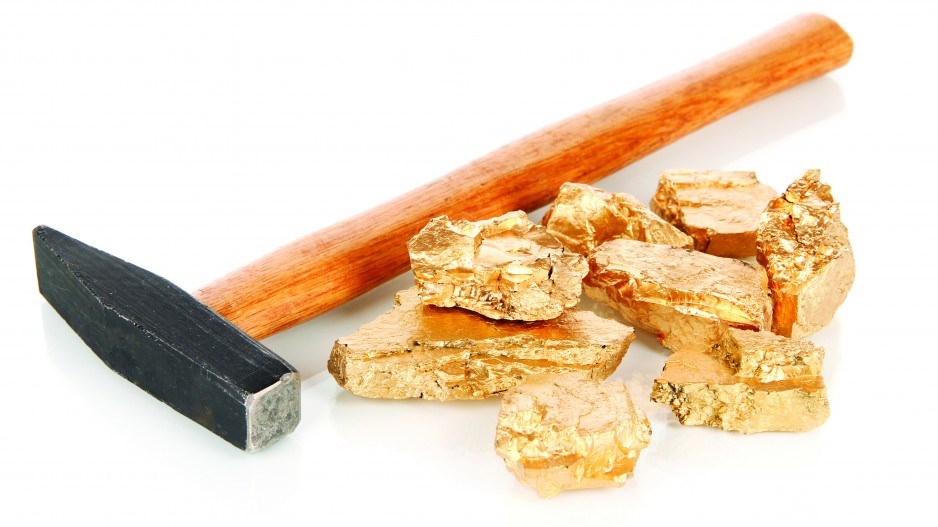Just one year ago, the hole that Barkerville Gold Mines Ltd. (TSX-V:BGM) had dug in the Cariboo mining district was starting to look less like a mine and more like a grave.
The company was deep in debt, its shares were in a downward spiral and its credibility was in tatters, following a year long cease-trade order imposed by the BC Securities Commission in 2013 over a dubious resource estimate made by company founder and former CEO Frank Callaghan.
What a difference a year can make.
The company is now debt-free, has raised $39 million in new investment, has been running three mill operations around the clock, and plans to restart its Bonanza Ledge mine in 2016.
“We were mired in debt and we had a $19 million debt obligation,” said Barkerville’s new CEO, Tom Obradovich, who was brought on board in January 2015 following Callaghan’s resignation. “We subsequently cleaned up the mining that was being done from a losing venture to a cash-positive venture.”
Thanks to a lifeline, in the form of a $15 million loan, thrown by legendary Canadian investor and gold bug Eric Sprott, the company was able to stay afloat long enough to get its finances in order.
In January, Obradovich, a key player in Aurelian Resources Inc., which was acquired by Kinross Gold Corp. (TSX:K), was brought on board, and other mining executives with proven track records are also being brought in.
One of the first things Obradovich did was shut down Barkerville’s small underground mining operation at Bonanza Ledge and sell off all the gold that had been mined there – about $22 million worth.
The company converted the Sprott debt to equity, giving Sprott a 41% stake. In June, the company was able to attract another key investor – Osisko Gold Royalties Ltd. (TSX:OR).
Osisko did a $6.9 million financing in June for a 7% stake, followed more recently by agreement for another $10.2 million to bring its position to 19.9%. Osisko also recently signed a $25 million royalty agreement for 1.5% of Barkerville’s future gold production. The company also recently announced another $3.5 million in a private placement with Sprott.
Under those financing arrangements, Osisko executive Luc Lessard will be brought in as chief operating officer.
With roughly $39 million and no debt, the company plans to embark on a drilling program on its Cow Mountain property, pursue new greenfield exploration elsewhere in its district and update its mining permit, with the goal of restarting its Bonanza Ledge mine by the third quarter of 2016.
Barkerville’s holdings are in the historic Cariboo mining district. The pockets of gold there are small and dispersed, but geologists – including those skeptical about Barkerville’s viability – agree they are high-grade deposits. Whatever faults Callaghan may have had as a builder of mines, he is credited with having assembled a large number of leases and claims into one large 60-kilometre-long strip.
The company has focused on three main areas: Bonanza Ledge, Cow Mountain and Island Mountain. While Bonanza Ledge is permitted for a small mine, it’s Cow Mountain that holds the most promise for a larger gold mine.
“Now we’re developing a small-scale mine in one area and four kilometres away we’ve got Cow Mountain that we want to develop,” Obradovich said. “And we’ve got 60 kilometres. Do the math – there’s got to be more deposits in there. So I imagine we’ll be developing an entire mining camp over time.”
Because it’s so small, Bonanza Ledge was developed under a small mines permit (75,000 tonnes per year or less). It produced gold only briefly before the company ran into trouble and was shut down.
When it goes back into operation in 2016, it is expected to produce an estimated 20,000 ounces of gold per year, with an estimated mine life of five years, Obradovich said.
The company’s recent drilling near Bonanza Ledge at what the company calls the B.C. vein indicates the Bonanza mine could be expanded. Obradovich said it might be possible to mine the two ore bodies from the same underground workings.
“The B.C. vein is high-grade and it’s fairly substantial,” Obradovich said. “It’s shaping up to be quite a substantial ore body.”
After reading Barkerville’s technical reports, Andy Randell, principal geologist for Strata GeoData Services (SGDS) Hive, said he thinks Barkerville has a lot going for it, including a good mining district and accessibility. He also said it’s clear someone on Barkerville’s board understands the science of assaying and is not taking previous results for granted.
“All in all, I think that this is an exciting project,” Randell said. “Their redirection seems to be working, and they have started off well by reassessing what they have.”
The company’s longer-term plan is to develop a second, larger mine at Cow Mountain. According to an undated technical report, Cow Mountain’s gold resources are estimated at 4.8 million ounces inferred and indicated. Obradovich said it’s too early to say what the capital cost of building a mine at Cow Mountain would be.
Since the beginning of 2013, gold prices have dropped from US$1,700 per ounce to US$1,062 per ounce. But Canada’s low dollar meant Barkerville was earning more than $1,400 per ounce when it sold off all its gold earlier in 2015.
“We’re fortunate that we are a Canadian operation,” Obradovich said. “We pay our bills in Canadian dollars and we get the conversion to Canadian dollars from the U.S. in gold sales.”




